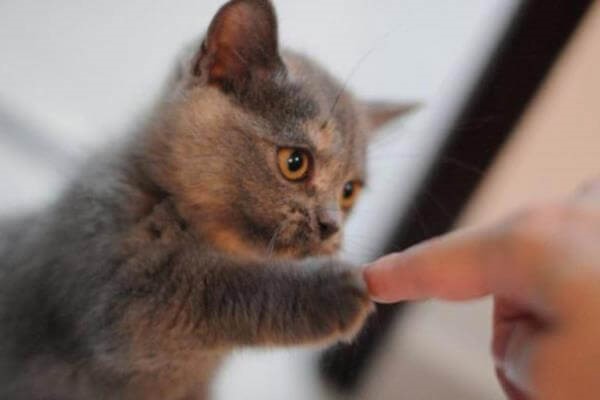Cats are highly intelligent animals and receptive to learning, but this includes the acquisition of both positive and negative habits, which is why knowing how to train your cat to behave well is crucial to avoid developing or increasing behavioral problems.
Indice
Training a cat is a task that requires perseverance, interest and patience in order to be carried out successfully.
And despite the widespread belief that cats cannot be trained, this is more than possible if the right strategies are applied to the particular situation of each feline.
Training is essential for proper coexistence and the development of a strong human-cat bond; so the smallest teachings, such as learning to come when called, are just as valuable as when you want to teach him not to wreck the furniture.
Basic principles
The indications for training a feline are somewhat different from how they would be to educate a dog, but they share certain elements in common that are fundamental for good teaching: positive reinforcement, continuity or routine and the non-use of physical punishment, mostly known as negative reinforcement.
One of the basic principles that everyone should know and apply in training is that when the cat does what it is being instructed to do, it should receive a reward (positive reinforcement) that helps it to assimilate the action as something positive for it.
Positive reinforcement can be through a treat, petting and cuddling, or a short play session depending on the circumstances.
With regard to “negative” or incorrect behaviors on the part of the cat, it will be necessary to apply the well-known law of ice and ignore whatever the feline is doing, something that is mainly used in the case of meowing in the middle of the night for no apparent reason, biting or scratching.
Punishing the animal should never be an option, especially by yelling, hitting or intimidation.
To training a catIn the case of an urgent need for punishment or something to stop the negative behavior, the person should only do so if the animal has been caught red-handed, never two minutes, three hours or a day later, always at the right time.
Also using his voice as a tool with a resounding “no”, but without shouting.
Duration of training sessions
The ideal is usually one or two sessions per day with a duration of 10 minutes, trying to avoid stressing the kitty or putting it in uncomfortable situations.
Sessions should be held at times of activity, some time apart from meals and always in places that are comfortable and with few distractions.
It is not recommended at all to extend the sessions for more than 10 minutes, as this will be overwhelming for the animal and will become detrimental in the short and long term.
At the same time, routine and step by step should be used to ensure that the cat assimilates correctly what is being taught.
Everything must be done one step at a time, with patience and dedication, demanding too much from the feline or oversaturating him will result in him becoming obstinate or developing an aversion to the sessions, which may even cause the development or increase of behavioral problems.
Image courtesy of (www.curiosfera.com), all rights reserved.








